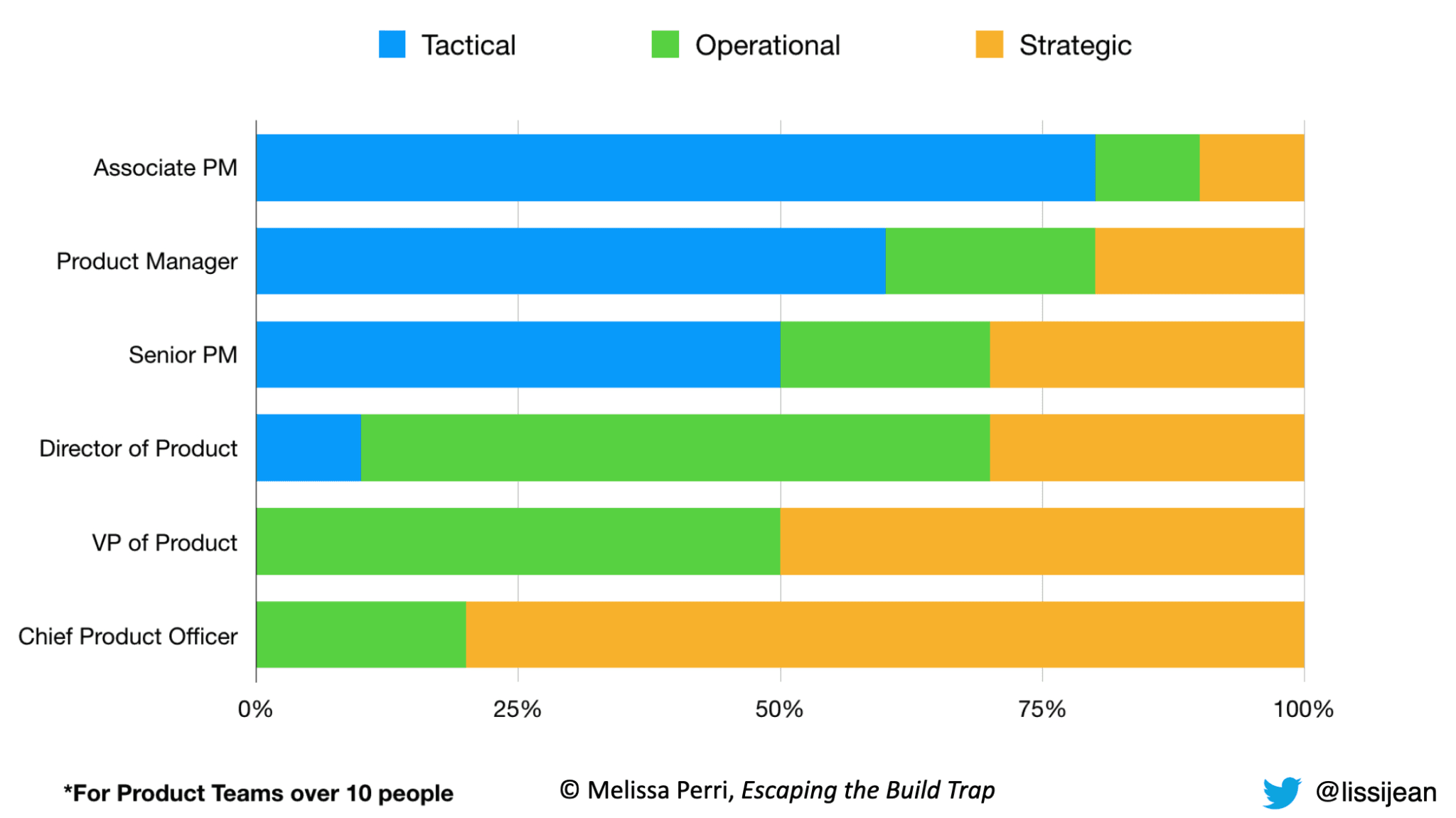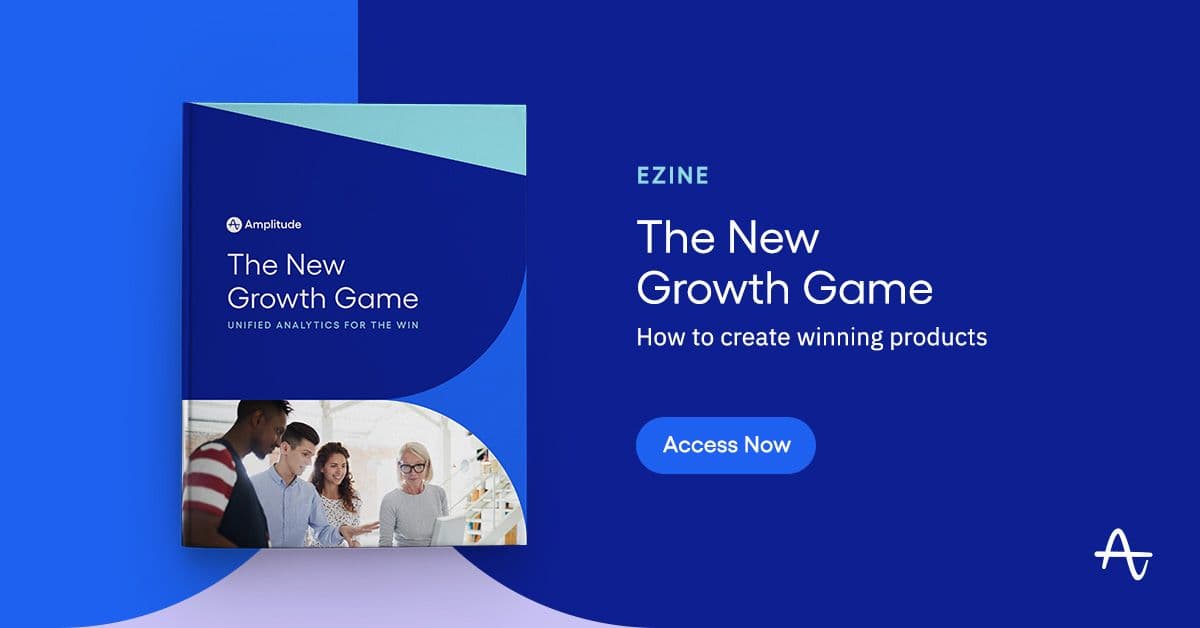4 Tips from Melissa Perri to Help New Chief Product Officers Settle into Their Roles
Read four tips all new chief product officers should know, including how to connect product strategy with business outcomes.
As of July 2022, there are over 2,000 openings for chief product officers (CPOs) in the United States on LinkedIn alone. Why? Because customer expectations are changing, and businesses need to deliver outstanding digital product experiences to meet their wants and needs. And companies need someone with product knowledge and business acumen to oversee the delivery of these product experiences.
However, there are very few chief product officers in the workforce, so many first-time chief product officers are unclear about their roles or how to thrive in their new position.
At Amplify 2022, Amplitude’s annual conference, Melissa Perri, CEO of Produx Labs and author of Escaping the Build Trap, discussed what it’s like to thrive as a first-time chief product officer. Melissa’s session, titled You’re a First-time CPO! Now What? was packed with insights for new chief product officers in both SaaS and non-SaaS spaces. The session included common pitfalls to avoid as they settle into their roles as new CPOs.
Here are four tips all new chief product officers should know:
- Clarify your tasks and the company’s expectations.
- Connect your activities with business outcomes.
- Spend time on building the product strategy.
- Earn the trust of the executive team by being a team player.
1. Clarify your tasks and the company’s expectations
Because CPOs are often senior product managers who eventually take on leadership roles in their companies, there are usually no clear lines on what they should drop from their previous positions. But chief product officers should spend more than 75% of their time on strategic initiatives, whereas senior product managers should focus half their time on tactical work.

Defining the exact role of a chief product officer is not an easy task because the duties of a CPO vary depending on the company and the product. Typically, a chief product officer ensures the product team’s activities align with the business goals while solving customer problems. Georgie Smallwood, CPO of Tier Mobility, says, “The role of the CPO is essentially the same as being a product manager. You are the intersection of the user and the business, but the stakes are much higher.”
To further explain how roles vary depending on the context, Melissa grouped chief product officers into three categories: the startup, the scale-up, and the enterprise CPO.
- Startup CPOs are tasked with finding product-market fit, setting up processes, and taking ARR from zero to seven figures.
- Scale-up CPOs work with companies in the growth stage to help scale teams and infrastructure. They have more complicated strategies and portfolios and deal with mergers and acquisitions, pricing and packaging, and more.
- Enterprise CPOs work with large companies. They must be more diplomatic, have significant financial acumen, and navigate non-product spheres—like compliance and legal—alongside their traditional product responsibilities.
Your company’s expectations of you must align with where they are with their product. To define your responsibilities, ask questions. Talk to the product, marketing, sales, customer success, development, and executive teams in your first few days. Get a 360-degree view of where the product is, compare it to the business goals, and use that information to map out your action plans.
2. Connect your activities with business outcomes
Melissa talked about how new CPOs often think that executives don’t understand them. However, one of the biggest mistakes new chief product officers make is communicating with the executives in “product management speak” without tying it back to the business outcomes.
New chief product officers can easily get distracted by talking about things like agile, sprint planning, backlog, etc. But if you are talking about the product backlog, you have to be able to explain the effect it has on the business. According to Gijo Mathew, CPO of VTS, “If you don’t know what are the most important outcomes for the business then you need to get smart on that. If you do, then you have to be able to identify and execute a strategy to get to that outcome.”
As Melissa Perri said, “the language of the executives is money.” A first-time CPO should be able to talk about their role, responsibilities, and action plans while framing it back to the revenue and cost involved.
If you don’t know the expected business outcomes, ask the executives. “There’s usually some kind of agenda there. They have an exit expectation. They have a goal that they’re actually striving for,” Melissa said. “You need to understand what that is because you are gonna be making decisions based on those types of outcomes, not necessarily just on customer problems.”
3. Spend time on building the product strategy
The core of a chief product officer’s role is building a product strategy, “a framework that enables teams to make product decisions about how to drive customer value which in turn drives business value.”
The strategy is the path you lay for both the product and the executive teams to contribute to the overall business outcome. Getting executives, leadership, and the product team involved is essential in the strategy creation process.
Melissa shared a four-tier strategy deployment framework to help first-time CPOs build the strategy and get everyone involved. The framework includes:
- Vision: The vision answers questions like: Where do we see the business in five to 10 years? What’s our value for our customers? What’s our position in the market? The CEO primarily sets the vision, while you contribute to it as the chief product officer.
- Strategic Intents: These are the business challenges standing in the way of achieving the vision. They are the big business decisions that the company has to make to achieve its goals. For example, these decisions could be about expanding geographically, moving upmarket, etc. The chief product officer is responsible for recognizing the strategic intent and setting them together with the rest of the C-suite.
- Product Initiative: The product leadership team below the chief product officer is responsible for setting the product initiatives. These are the business challenges that they want to solve from a product perspective.
- Options: These are your product solutions. The product managers and product marketers set these. A good example of an option is adding features to a product to increase user adoption.

According to Melissa, at the end of the day, everybody in your organization should be able to tell the story from the Options back up to the Visions and how the business should reach them. It’s the CPO’s job to enable people to tell this story.
Don’t rush through the strategy process to get the ball rolling quickly. It’s at the heart of your job, so handle your product strategy carefully and diligently. Check out Amplitude’s free product strategy template for an easy way to get started.
4. Earn the trust of the executive team by being a team player
Melissa explained how it’s comfortable for chief product officers to spend time with their team of product managers. But CPOs often forget that they’re part of the executive team. As a CPO, gaining the trust of other executives is essential and how you keep your spot at the C-suite table.
By treating the C-suite as your team, you learn to communicate with executives the same way you did with your product team. You will listen and learn from other executives to build trust and rapport. Having that trust will make your job easier as a new member of the team.
A team player also knows when to listen and ask questions, especially in challenging situations. Get to know your fellow leaders and understand their role in the business. You will find it easier to share your ideas, communicate your impact, and keep your seat at the table.
Communication is vital as a CPO
It’s one thing to get a job as a chief product officer and another to thrive in it. As a CPO, you must recognize your strengths and align your skill set to the stage your product is in and your company’s business goals.
Clear communication is the one skill that CPOs across company sizes and industries must have in their toolbox. It will help balance the product and executive teams and make sure you’re able to communicate your product strategy effectively to both.
Watch Melissa Perri’s entire session to learn more about how to set up systems to help you scale, hire the right people for your team, and dive deeper into the product strategy process.

Noorisingh Saini
Global Content Marketing Manager, Amplitude
Noorisingh Saini is a data-driven marketer managing global content marketing at Amplitude. Previously, she managed all customer identity content at Okta. Noorisingh graduated from Yale University with a degree in Cognitive Science.
More from Noorisingh





